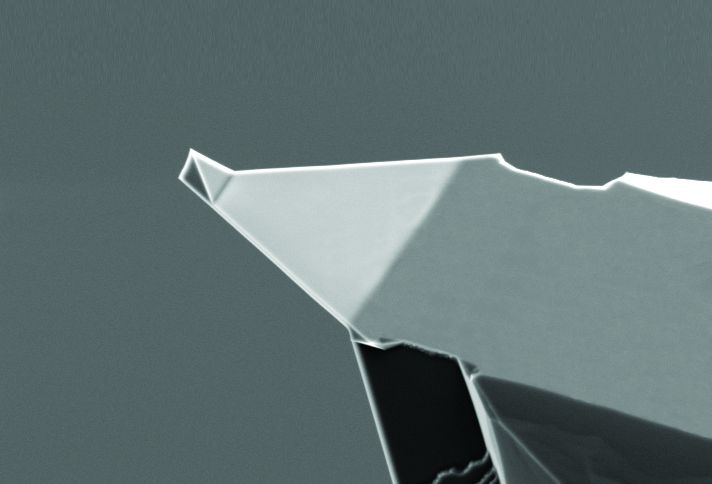Inspired by Kristen M. Burson et al.’s “Resolving amorphous solid-liquid interfaces by atomic force microscopy”, Applied Physics Letters 108, 201602 (2016); http://aip.scitation.org/doi/abs/10.1063/1.4949556, the scans below were made by Dr. Roger Proksch of Asylum Research using a NanoWorld Arrow UHF AFM probe and an Asylum Cypher Atomic Force Microscope.


Using blueDrive and the NanoWorld Arrow UHF AFM tip, it was also possible to simultaneously map the topography and tip-sample stiffness using AM-FM mode (Figure 2). Like Burson et al., a disordered-appearing surface, with length scales similar to those reported in that paper could be seen. Interestingly, these structures were visible with slightly different resolutions with every attempt made. This is a testament to the low noise of the Cypher AFM and to the reliable sharpness of the Arrow UHF cantilevers.
Courtesy of Dr. Roger Proksch, Asylum Research, an Oxford Instruments Company.
#afmprobes #afmtips #atomicforcemicroscopy #AFM


